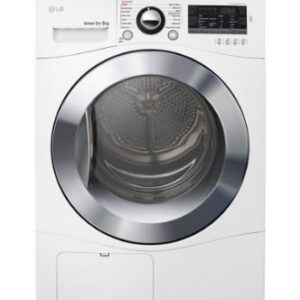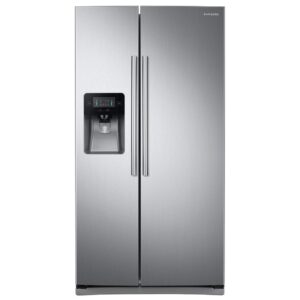When weighing the options of a gas stove vs electric stove, there are several factors to consider. Both options have their pros and cons, and the decision ultimately depends on your cooking needs and preferences, whether you’re leaning towards an electric vs gas range. In this comprehensive guide, we’ll delve into the differences between electric and gas stoves, covering aspects such as energy source, heat control, baking performance, safety, and more. By the end, you’ll have a clear understanding of whether a gas or electric range is the best fit for your kitchen.
Understanding Gas Stoves
Gas stoves, known for their flame cooking capabilities, utilize an open flame to cook food both on the stovetop and inside the oven. The heat intensity can be adjusted quickly by manipulating the flame size, allowing for precise burner control. Gas cooking requires a dedicated gas line, which may need to be installed if not already present in your kitchen.
Pros of Gas Stoves
- Responsive Heat Control: Gas stoves offer instantaneous heat adjustment, allowing you to quickly react if a dish is cooking too fast or too slow. This level of control is particularly beneficial for techniques like sautéing and stir-frying.
- Expanded Cooking Techniques: The open flame of a gas stove enables direct charring and grilling on the stovetop. It also allows for heat to reach up the sides of pans, making it easier to toss and rotate food during cooking.
- Quick Burner Cooldown: When you turn off a gas burner, the temperature response is nearly immediate, providing convenience and safety in the kitchen.
- Fast Oven Preheating: Gas heat can be cranked up quickly, allowing for faster preheating times compared to electric ovens.
Cons of Gas Stoves
- Availability of Gas Line: Gas stoves require a dedicated gas line, which may not be readily available in all areas. Installing a gas line can be costly if not already present in your kitchen.
- Emissions and Safety Concerns: Gas stoves produce emissions, such as carbon monoxide, that can be harmful to both human health and the environment. Proper ventilation is necessary to ensure safety.
- Cleaning Challenges: Gas stovetops can be trickier to clean compared to electric stoves. They often require removing grates and burner caps for thorough cleaning, adding extra steps to the cleaning process.
- Higher Installation Cost: While the cost of gas stoves themselves is comparable to electric stoves, the installation cost can be higher due to the need for a gas line.
Exploring Electric Stoves
Electric stoves, on the other hand, rely on electric elements to cook food. These heating elements can be exposed coils on the stovetop or buried beneath a smooth ceramic or glass surface. Known for their easy installation, electric stoves only require an electrical outlet, making them relatively easy to install in most kitchens. However, they typically need a 240-volt power outlet instead of the standard 110-volt outlet.
Pros of Electric Stoves
- Safety: Electric stoves are generally considered safer than gas stoves since they don’t utilize an open flame. This eliminates the risk of flammable items catching fire and reduces the emissions produced during cooking.
- Ease of Cleaning: Electric stovetops with smooth ceramic or glass surfaces are easy to clean. A simple wipe with a damp rag and dish soap is often sufficient to remove spills and stains.
- Better for Keeping Food Warm: Electric stoves are known for better heat retention, making them ideal for keeping food warm after cooking.
- Lower Installation Cost: While the cost of electric stoves themselves can vary, the installation cost is generally lower than that of gas stoves since no gas line is required.
Cons of Electric Stoves
- Higher Operating Cost: Electric stoves tend to be more expensive to run compared to gas stoves. The cost of electricity can be higher than natural gas in many areas, impacting your monthly utility bills.
- Slower Heat Response: Electric stoves do not respond as quickly to temperature changes, especially when going from a higher to a lower temperature. This can affect the precision and timing of certain cooking techniques.
- Limited Use during Power Outages: Electric stoves rely on electricity to function, so they cannot be used during power outages unless you have a backup power source like a generator.
Comparing Gas and Electric Stoves
When comparing gas and electric stoves, there are several key factors to consider: stove safety, stove efficiency, energy costs, and stove costs, as well as temperature control, and cooking techniques.
Safety
In terms of safety, electric stoves generally have an advantage over gas stoves. Gas stoves, which are often questioned if they are more dangerous than electric, utilize an open flame, increasing the risk of fire hazards and releasing potentially harmful emissions. Proper ventilation is crucial when using gas stoves to mitigate the risk of a gas leak and ensure the safety of both occupants and the environment.
Cost and Maintenance
The cost of purchasing and installing a stove can vary depending on the model, brand, and features. Gas stoves may have a higher installation cost due to the need for a gas line, but the operating cost can be lower in areas where natural gas costs are cheaper than electricity costs. Conversely, electric stoves have a lower initial stove cost but may result in higher gas vs electric stove monthly cost in terms of utility bills.
Cleaning stovetops with open electric coils is comparable to cleaning gas stoves with burners and grates. However, electric stoves with smooth ceramic or glass tops, known as electric surface cooktops, are generally easier to clean, requiring only a wipe with a damp rag and dish soap, making them an easy to clean cooktop surface option.
Energy Efficiency
When it comes to energy efficiency, gas stoves fall short compared to electric stoves. Electric stoves transfer around 74% of their energy to food, while gas stoves typically transfer only about 40%. However, electric stoves are not the pinnacle of energy-efficient cooking. Induction cooktops, which utilize electromagnetism to directly heat cookware, boast an impressive energy transfer rate of up to 90% to food, as highlighted by the American Council for an Energy-Efficient Economy, making the induction stove a superior choice for energy-conscious consumers.
Temperature Control
Gas stoves are renowned for their superior cooking control, offering more precise temperature control thanks to the instant response of the open flame. The flames efficiently spread around the bottom of the pan, facilitating high heat and quick adjustments in temperature. Electric stoves, while capable of reaching the desired heat levels, lag behind in responsiveness, particularly when lowering from high temperatures.
Cooking Techniques
Both gas and electric stoves are versatile, supporting a broad cooking range and accommodating various cookware types and cooking techniques, yet they exhibit subtle differences in their performance capabilities.
- Boiling and Simmering: Gas stoves excel at boiling water quickly and achieving the perfect simmering temperature due to their fast and precise heat control.
- Sauteing and Stir-frying: The immediate heat response of gas stoves makes them well-suited for sauteing and stir-frying, where quick temperature adjustments are necessary. However, electric stoves can also successfully manage these techniques.
- Baking and Roasting: Electric ovens distribute heat more evenly than gas ovens, making them ideal for baking and roasting. The drier heat emitted by electric ovens is also beneficial for achieving browning and crispness in dishes.
- Grilling and Broiling: Gas ranges offer quick and intense heat, making broiling and grilling faster compared to electric stoves. However, modern electric ovens can still achieve satisfactory results in broiling.
- Melting and Warming: Gas stoves cool down rapidly when turned off, making them suitable for melting and warming food. Electric stoves take longer to cool down, but their precise heat control allows for effective melting and warming as well.
Final Thoughts
The decision between an electric stove and a gas stove hinges on your cooking preferences and priorities. Gas stoves, favored by professional chefs and home chef enthusiasts, offer faster and more precise heat control. However, they necessitate a gas line and can present safety risks without proper ventilation. Electric stoves are safer, simpler to clean, and more energy-efficient, yet they may incur higher operating costs and exhibit a slower heat response, influencing your appliance choice.
Assess your specific cooking needs, kitchen updates, the availability of gas lines, and the cost factors, including stove installation and appliance maintenance, before settling on a choice. Regardless of your selection, always prioritize safety and proper maintenance for an uninterrupted and enjoyable cooking experience.









